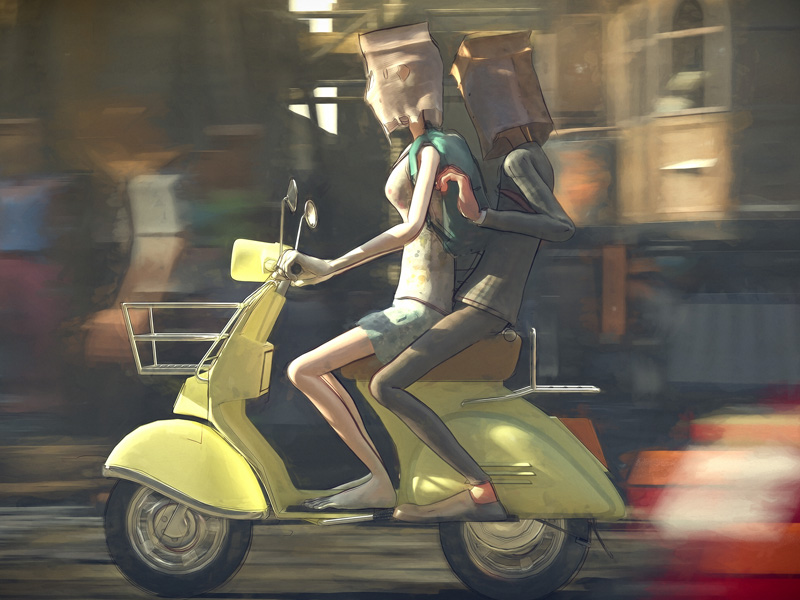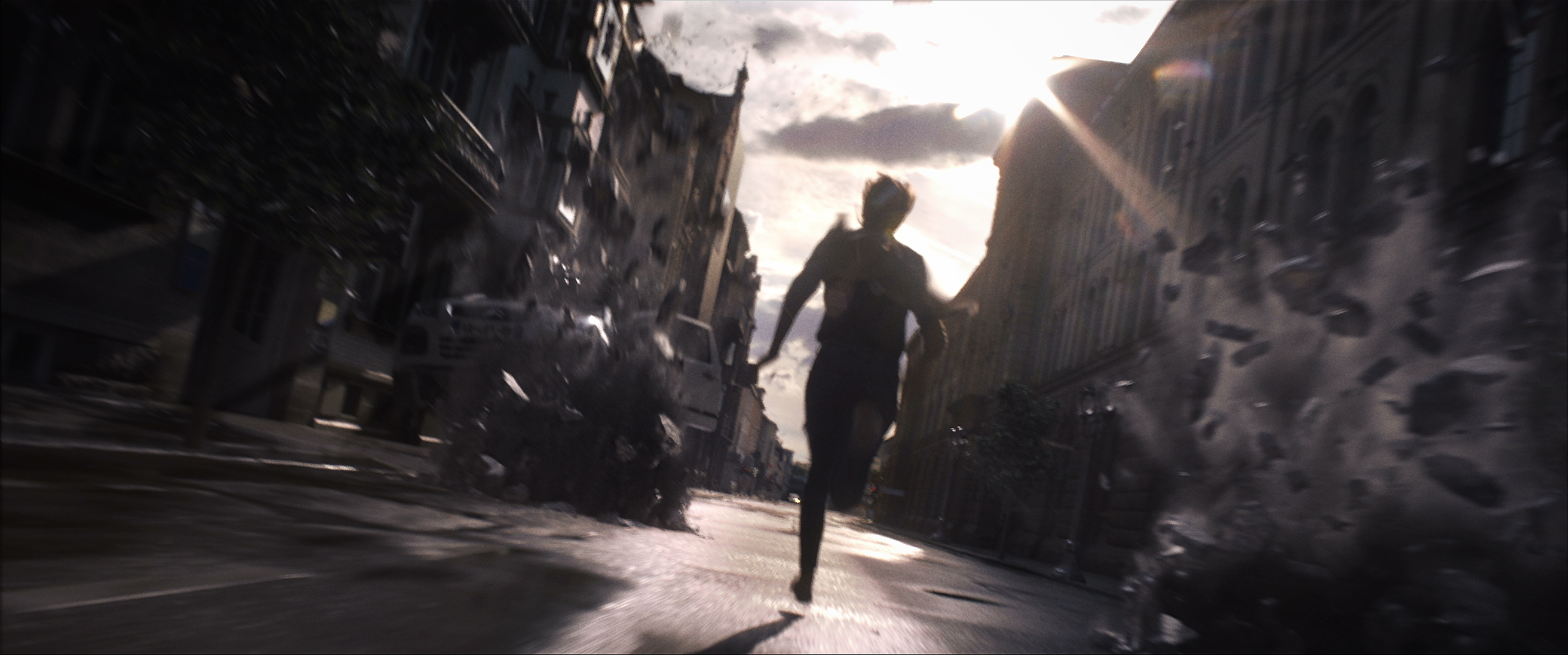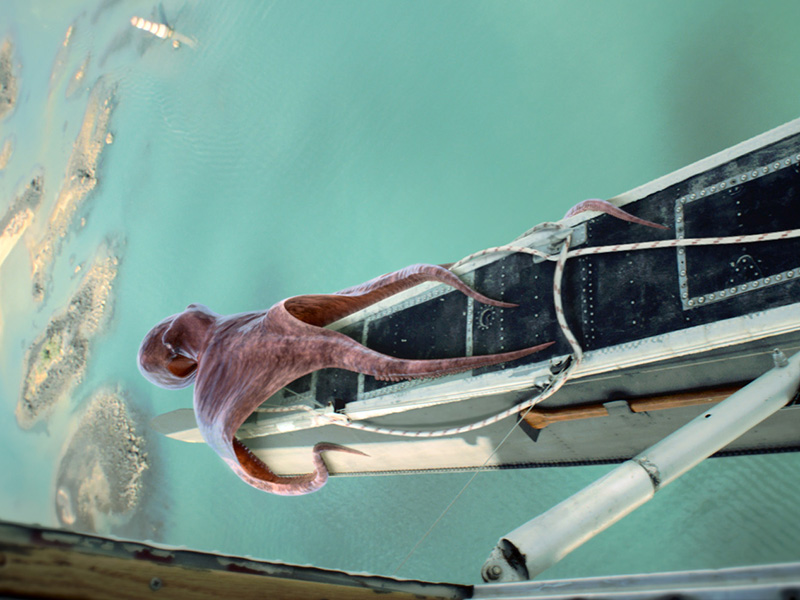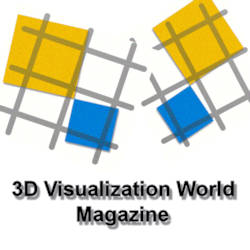SIGGRAPH Asia 2016 Awards submissions from various programs. Recognizing individuals who have made exceptional effort in their community through their research, teaching, service, or writing.
- Computer Animation Festival Award Winners
- Emerging Technologies Award Winners
- Symposium on Mobile Graphics and Interactive Applications Award Winners
- Symposium on Visualization Award Winners
Computer Animation Festival Award Winners

Award: Computer Animation Festival Best of Show Award Schirkoa
Description: A baghead's redemption transforms a dystopian city - Schirkoa
Director: Ishan Shukla
Producer: Sharad Varma
Country: INDIA

Award: Computer Animation Festival Best Student Project Award BreakingPoint
Description: What if someone has to become something greater than just human to save their family?
Director: Martin Lapp
Director Affiliation: Graduate Filmakademie Baden-Württemberg
Producer: Anica Maruhn, Tobias Gerginov, Francesco Faranna (VFX)
Producer Affiliation: Graduate Filmakademie Baden-Württemberg
Country: GERMANY

Award: Computer Animation Festival Jury Special Award Accidents, Blunders and Calamities
Description: An alphabet of the most dangerous animal of all – HUMANS!
Director: James Cunningham
Director Affiliation: Media Design School
Producer: James Cunningham, Oliver Hilbert
Producer Affiliation: Media Design School
Country: NEW ZEALAND
Emerging Technologies Award Winners
Award: Emerging Technologies Best Demo Voted by Attendees Title: Bottomless Joystick Authors Names & Affiliation: Yuichiro Katsumoto, Interactive and Digital Media Institute, National University of Singapore Summary: We propose a physical interface called a "Bottomless Joystick" for mid-air interaction in this Virtual Reality era. A conventional joystick is suitable for desktop gaming, especially flight simulations. However, it cannot be used in mid-air because it requires a bottom to mount on the surface. On the other hand, the mid-air interaction device is subject to increasing demand due to the recent VR goggle/environment boom. We therefore developed a Bottomless Joystick that can represent a conventional joystick function in mid-air. By utilizing two servomotors and a counterweight, our device reproduces various force feedbacks such as the heaviness of the joystick and the gun effect.
Award: Emerging Technologies Best Demo Voted by Committee Title: Reality Forge: Interactive Dynamic Multi-Projection Mapping Authors Names & Affiliation: Christian Siegl, Computer Graphics Group, University of Erlangen Nuremberg Matteo Colaianni, Computer Graphics Group, University of Erlangen Nuremberg Vanessa Lange, Computer Graphics Group, University of Erlangen Nuremberg Marc Stamminger, Computer Graphics Group, University of Erlangen Nuremberg Frank Bauer, Computer Graphics Group, University of Erlangen Nuremberg Description: Creating digital assets, especially surface textures is a tedious and often unintuitive task. We built a fun to use, interactive projection-mapping system that aims to simplify this process. With this system, we present a non-destructive, immersive, fully dynamic mixed-reality painting system for real-world objects that combines the workflow of a traditional airbrush artist with the power of digital media. Based on this system we present a non-destructive, immersive, fully dynamic mixed-reality painting system for real-world objects that combines the workflow of a traditional airbrush artist with the power of digital media.
Symposium on Mobile Graphics and Interactive Applications Award Winners
Award: Symposium on Mobile Graphics and Interactive Applications Best Demo Title: BeCasso: Artistic Image Processing and Editing on Mobile Devices Authors Names & Affiliation: Sebastian Pasewaldt, Hasso Plattner Institute / University of Potsdam Amir Semmo, Hasso Plattner Institute / University of Potsdam Jürgen Döllner, Hasso Plattner Institute / University of Potsdam Frank Schlegel, Digital Masterpieces GmbH Description: We will present BeCasso, an iOS app that interactively transforms photos into digital artworks, such as oil, watercolor, and toon paintings. We will give attendees the possibility to test BeCasso. Further, we will share insights on technological backgrounds and design processes, as well as on user-feedback from different communities.
Award: Symposium on Mobile Graphics and Interactive Applications Best Demo Runner Up Title: Demonstration of the use of Tangible Learning in STEM Education. Authors Names & Affiliation: Kris Lee Kian Teck, Nanyang Polytechnic, Nanyang Technological University, Nanyang Technological University, School of Art, Design and Media Description: Demonstration of the use of Tangible Learning in STEM Education.
Symposium on Visualization Award Winners
Award: Symposium on Visualization Best Paper Award Title: Evaluating the Perception of Semi-Transparent Structures in Direct Volume Rendering Techniques Authors Name & Affiliation: Rickard Englund, Linköping University Timo Ropinski, Ulm University Description: Direct volume rendering (DVR) provides the possibility to visualize volumetric data sets as they occur in many scientific disciplines. A key benefit of DVR is that semi-transparency can be facilitated in order to convey the complexity of the visualized data. Unfortunately, semi-transparency introduces new challenges in spatial comprehension of the visualized data, as the ambiguities inherent to semi-transparent representations affect spatial comprehension. Accordingly, many visualization techniques have been introduced to enhance the spatial comprehension of DVR images. In this paper, we conduct a user evaluation in which we compare standard DVR with five visualization techniques which have been proposed to enhance the spatial comprehension of DVR images. In our study, we investigate the perceptual performance of these techniques and compare them against each other to find out which technique is most suitable for different types of data and purposes. In order to do this, a large-scale user study was conducted with 300 participants who completed a number of micro-tasks designed such that the aggregated feedback gives us insight on how well these techniques aid the end user to perceive depth and shape of objects. Within this paper we discuss the tested techniques, present the conducted study and analyze the retrieved results.
Award: Symposium on Visualization Honourable Mention Award Title: Deferred Vector Map Visualization Authors Names & Affiliation: Matthias Thoeny, University of Zurich Markus Billeter, University of Zurich Renato Pajarola, University of Zurich Description: Interactive rendering of large scale vector maps is a key challenge for high-quality geographic visualization software systems. In this paper we present a novel approach for the visualization of large scale vector maps over detailed height-field terrains. Our method uses a deferred line shading approach to render large scale vector maps directly in a screen-space shading stage over a terrain visualization. The fact that there is no traditional geometric polygonal rendering involved allows our algorithm to outperform conventional vector map rendering algorithms for geographic information systems. Our flexible clustered deferred line rendering approach allows a user to interactively customize and apply advanced vector styling methods, as well as the integration into a vector map levelof- detail system
Award: Symposium on Visualization Honourable Mention Award Title: Privacy Preserving Event Sequence Data Visualization using a Sankey Diagram-like Representation Authors Name & Affiliation: Jia-Kai Chou, UC Davis Yang Wang, UC Davis Kwan-Liu Ma, UC Davis Description: Given the growing rates and richness of data being collected nowadays, it is non-trivial for data owners to determine a single best publishing granularity that presents the most value of the data while preserving its privacy. There have been extensive studies on privacy preserving algorithms in the data mining community, but relatively few have been done to provide a supervised control over the anonymization process. We present the design and evaluation of a visual interface that assists users to employ commonly used data anonymization techniques for making privacy preserving visualizations of the data. We focus on event sequence data due to its vulnerability to privacy concerns. Our visual interface is designed for data owners to examine potential privacy issues, obfuscate information as suggested by the algorithm, and fine-tune the results per their requests. Case studies using multiple datasets under different scenarios demonstrate the effectiveness of our design. These studies show that using visualization as an interface can help identify potential privacy issues, reveal underlying anonymization processes, and allow users to balance between data utility and privacy.


